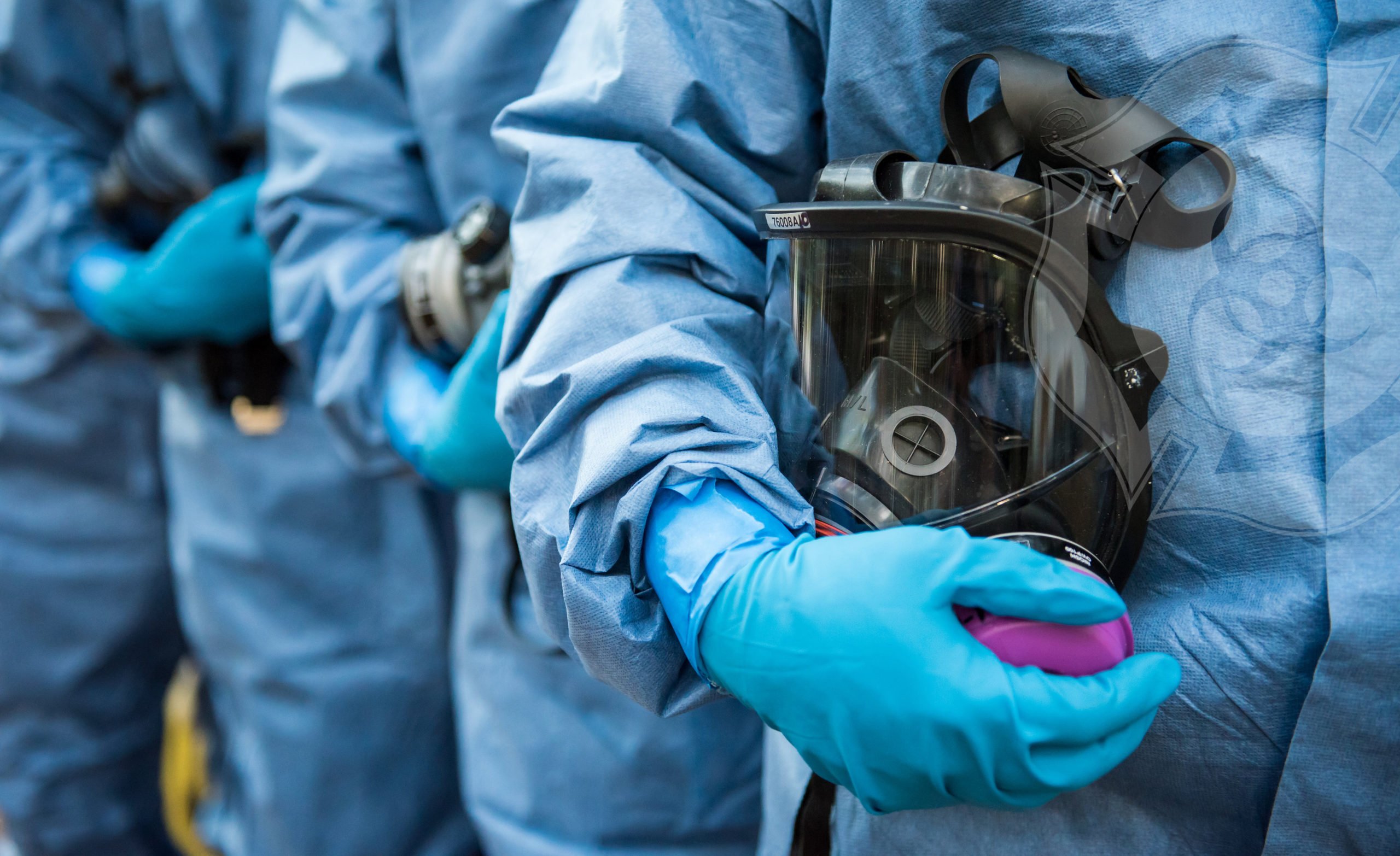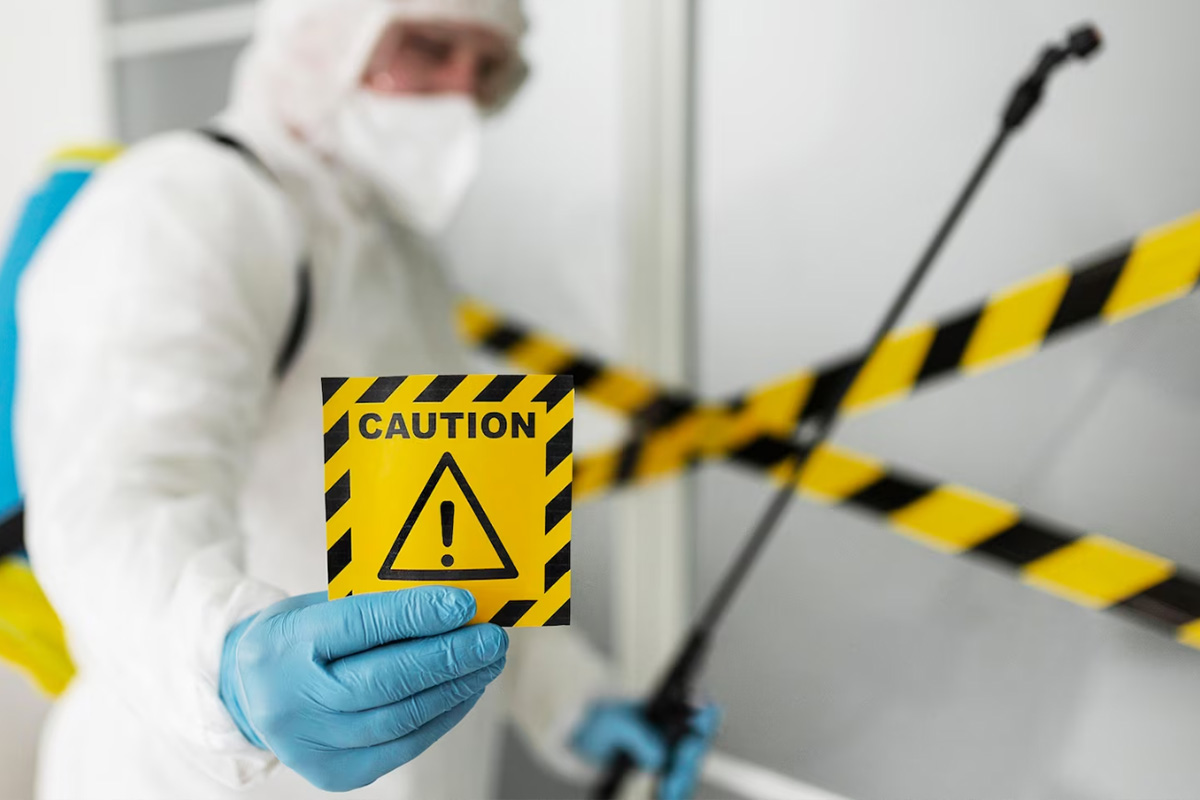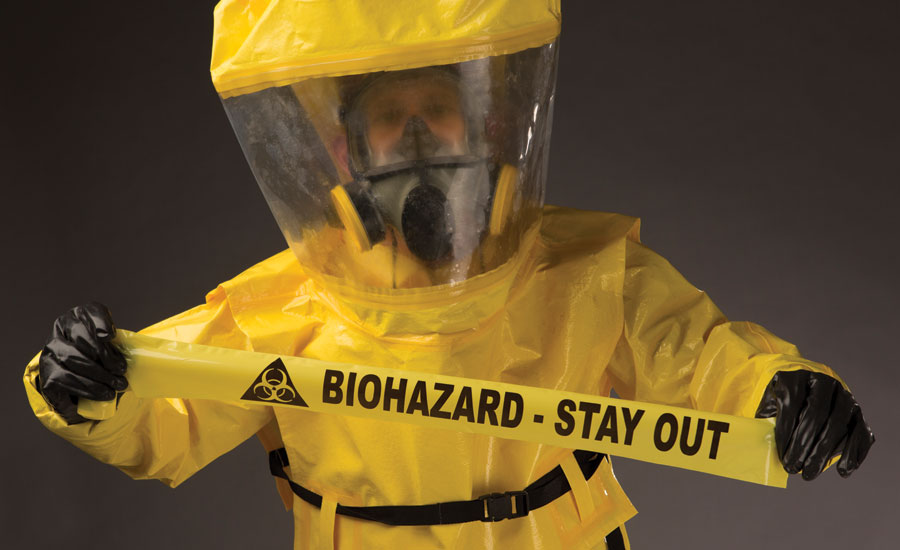Decomposition Death Clean Up: Specialized and Respectful Remediation
Decomposition Death Clean Up: Specialized and Respectful Remediation
Blog Article
Specialist Biohazard Cleanup for Criminal Offense Scenes, Injury Incidents, and Infected Rooms
In the realm of professional biohazard cleaning, thorough focus to information and adherence to security methods are paramount. As we delve right into the ins and outs of biohazard clean-up for these sensitive settings, a deeper understanding of the challenges and critical treatments included will arise, shedding light on the indispensable duty of expert cleanup solutions in bring back safety and tranquility of mind.

Importance of Biohazard Cleanup
Biohazard clean-up adhering to criminal offense scenes and injury incidents is vital for ensuring the security of people and the setting. When these events happen, they usually leave behind a range of biohazards such as blood, physical liquids, and various other potentially contagious products. These materials can harbor hazardous virus like viruses and microorganisms, posturing serious health and wellness dangers otherwise effectively cleansed and sanitized.
Professional biohazard clean-up services are trained to manage these harmful products securely and properly. They have the necessary equipment, such as personal protective gear and specialized cleaning agents, to thoroughly decontaminate the affected areas. By handing over the cleaning to trained professionals, individuals can avoid direct exposure to hazardous virus and prevent the spread of infectious illness.
Moreover, proper biohazard clean-up is necessary for securing the environment. Incorrect disposal of biohazardous materials can pollute dirt, water sources, and air, presenting a threat to wild animals and the ecological community. By complying with rigorous cleaning methods, specialists can ensure that biohazards are safely eliminated and disposed of based on guidelines, minimizing the risk of ecological contamination.
Kinds Of Biohazards Encountered
Numerous dangerous products generally experienced in criminal offense scenes and trauma events present considerable health and wellness threats if not taken care of correctly. Blood and physical liquids are amongst the most common biohazards located in these situations.
One more sort of biohazard usually encountered is sharp items like needles, damaged glass, and other things that can trigger injuries and transmit infections. Chemical risks are likewise a problem, as criminal activity scenes may consist of compounds like tear gas, pepper spray, or medication production products that call for customized handling and disposal treatments to avoid additional injury.
Furthermore, mold and germs development can take place precede where disintegration or prolonged exposure to wetness has happened. These bacteria can launch contaminants and irritants right into the air, posing respiratory risks to those exposed. In general, biohazard clean-up experts need to be well-appointed and trained to effectively deal with these different sorts of harmful products to make certain the safety of themselves and others.
Devices and Safety Equipment
When dealing with the important job of taking care of biohazards run into in crime scenes and injury occurrences, the use of correct equipment and protective equipment is critical to making certain the safety of individuals associated with the cleaning procedure. Personal protective equipment (PPE) such as gloves, coveralls, safety glasses, and masks are necessary to protect against direct call with potentially hazardous substances. Respirators are vital when taking care of biohazards that may come to be airborne, protecting employees from inhaling unsafe bits. Specialized cleaning devices like biohazard anti-bacterials, bags, and sharps containers are essential for the secure collection and disposal of infected materials. Additionally, sturdy equipment such as industrial-grade cleaner, foggers, and ozone generators may be needed to thoroughly sterilize the affected area. Ensuring that all equipment is correctly kept, regularly checked, and used according to security standards is vital in lessening the risk of exposure to biohazards throughout cleanup operations.
Clean-up Process and Strategies
Complete and reliable cleanup of biohazardous materials from crime find more scenes and trauma occurrences calls for thorough attention to information and adherence to stringent safety protocols. The clean-up procedure generally entails numerous crucial actions.
Following the elimination of biohazardous materials, the afflicted area undergoes a thorough cleansing and disinfection process. This action involves using specialized cleaning agents and tools to make sure that all traces of contamination are removed. After cleansing, the area is subjected to strenuous testing to validate that it is free and secure of any type of staying biohazards.

Decontamination and Disposal Procedures
To make certain extensive decontamination and proper disposal of biohazardous products, adhering to the careful clean-up process, particular procedures should be carefully adhered to with stringent adherence to safety and security procedures. Purification entails the elimination or neutralization of contaminants to minimize the danger of exposure and spread of hazardous materials. This procedure commonly includes cleaning, sanitizing, and sterilizing the afflicted location utilizing specific devices and EPA-approved chemicals.
When decontamination is completed, proper disposal of biohazardous products is vital to stop additional contamination or harm. Biohazardous waste, such as bodily liquids or blood-soaked products, have to be meticulously collected, packaged, and classified according to regulatory guidelines. ATP testing. These products are then carried to licensed facilities for disposal via appropriate channels, making certain compliance with local, state, and government laws

Verdict
Finally, professional biohazard clean-up is vital for making certain the effective and secure elimination of dangerous materials from criminal activity scenes, injury occurrences, and infected areas. By utilizing specialized devices, protective equipment, and complying with proper cleaning processes and strategies, biohazard clean-up teams can properly get rid of and decontaminate of biohazards, decreasing the danger of exposure and damage to individuals and the setting.
As we dig into the details of biohazard clean-up for these delicate settings, a deeper understanding of the obstacles and essential procedures entailed will arise, shedding light on the crucial function of professional cleaning services in recovering safety and tranquility of mind.
Professional biohazard clean-up solutions are trained to take care of these hazardous products securely and successfully. By adhering to stringent cleaning protocols, specialists can guarantee that biohazards are securely eliminated and disposed of in conformity with policies, decreasing the threat of environmental contamination.
Generally, biohazard cleaning professionals need to be experienced and fully equipped to properly take care of these various types of unsafe materials to guarantee the security of themselves and others.
When addressing the vital job of dealing with biohazards come across click over here in crime scenes and injury incidents, the application of proper equipment and protective gear is critical to making certain the security of individuals involved in the cleaning procedure.
Report this page